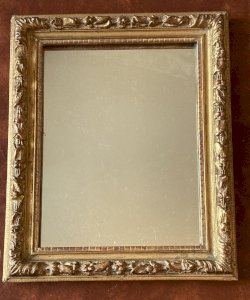- Sell Now
- Home
-
FURNISH
All STORAGE FURNITURE • Wardrobe • Chests of drawers, Chiffonnier • Sideboard • Shelves, Bookshelves • File cabinet • Sewing Furniture • Bar cabinet • TV Stand • Trunk, Chest TABLE & BEDSIDE TABLE • Dinner Table • Coffee table, side table, end table & Bedside • Console, Pedestal table & Selette • Serving Table, Trolley • Card Table • Draper's counter & table SEAT • Sofa • Armchair • Chair • Stool • Bench • Daybed • Beanbag & Footrest • Deckchair & Outdoor DESK, SECRETARY, DRESSING TABLE GARDEN LOUNGE BEDDING • Bed • Bedhead • Cradle, Moses basket CRAFT FURNITURE, WORKSHOP • Workbench • Stool, Ladder, Step • Easel & Trestle SCREEN PIANO
-
DECORATE
All TO PUT • Sculpture, Statuette • Vase & Planter • Dame Jeanne, Bonbonne & Flacon • Bridal globe, Dome • Pin tray, Ashtray • Candlestick & Candle • Photo frame • Stone, Fossil, Mineral • Earth Globe MIRROR WALL DECORATION • Painting • Engraving & Illustration • Poster • Tapestry • Wall Frame • Plate & Sign • Juju Hat & Wall Paniel • Mask • Hunting Trophy • Other object to hang CLOCK, PENDULUM & ALARM CLOCK ARRANGEMENT • Jar, Box & Case • Basket, Wastebasket & Crates • Magazine Rack & Vinyl Holder • Display & Spinner • Coat hook & Coat rack • Furniture Valet & Mannequin • Towel Holder • Suitcase & Travel Bag • Bottle Rack • Umbrella holder BATHROOM OFFICE • Mail holder • Bookends • Sulphide & Paperweight • Stationery FIREPLACE ACCESSORIES HOBBIES • Vintage Sport • Music • Vintage device • Smoking Item • Militaria, Ancient weapon • Miniature Vehicle • Game, Playing Cards • Collection object & Curiosity BIRD CAGE RELIGION, SPIRITUALITY
- TEXTURE
- ILLUMINATE
-
ACCOMODATE
All TABLE & SERVING • Plate • Silverware • Knife Holder • Glass • Bowl, Mug, Cup • Bowl, Ramekin & Cup • Dish, Cup & Salad Bowl • Tray, Basket & Server • Table Mat • Pitcher, Carafe, Bottle, Tea & Coffee Jug • Ice Bucket • Salt & Pepper shakers, Oil & Vinegar shakers • Sugar and jam maker • Gravy boat • Butter dish • Egg cup • Terrine OLD BALANCE CUTTING BOARD GRINDER CASSEROLE, SAUCEPAN & PAN KITCHEN UTENSIL & ACCESSORY
- TINKER
- KIDS
- Jewelry & Accessories
Login
Description
Heister mouth opener, chrome-plated metal, L15 x l6, 20th century object. It is made up of two branches articulated on a fixed support and having grooves at their end. A screw passes through the support and abuts on the base of the branches, allowing them to move apart. Mouth openers are designated differently depending on the era. Originally dilatory, in the 18th century they became speculum oris, a term also attributed to tongue depressors. However, they are two instruments different in form and purpose. Both designed for opening the mouth, the mouth opener is particularly used to force the mouth to open to feed the patient, the tongue depressor is used to keep the tongue in a low position for better visibility and better intervention access. Two first dilatations appear represented in Ambroise Paré (1510-1590). Pierre Florenz Heister (1683-1768) invented a screw mouth opener with plates that spread out like the branches of scissors. It was intended to feed children with a cleft palate before their surgery. Cruel use on slave ships “An instrument was found on ships, called an oris speculum, of which Thomas Clarkson (1760-1846), the abolitionist, bought a copy in Liverpool… This instrument was a mouth opener, a sort of scissor which was used to insert it between the teeth and force the black man to eat. Dr. Isaac Wilson, a Navy surgeon, recounts the treatment suffered by a young black man who refused to eat aboard the Elisabeth: "They used gentleness to persuade him to eat...He clenched his teeth so hard that it was impossible to put anything in his mouth. We then tried the Oris speculum... He resisted for another four or five days when he was brought back dead. Extract from “The Black God”, by Dibombari Mbock, Publisher Kiyikaat 2010 From the second half of the 19th century, these instruments were used in general anesthesia, ENT and dental surgery. (thanks to the website of the conservatory of medical heritage) Foreign buyers are welcome please check postage cost before buying. Careful, guaranteed shipping. Type: Craft object Origin: France Material: Chromed metal
Réf :
#224437
Related Products
Comments
Heister Mouth Opener - Speculum Retractor
45€
30000 Nîmes
Ce site contient des liens d’affiliation pour lesquels je peux recevoir une compensation.
Description
Heister mouth opener, chrome-plated metal, L15 x l6, 20th century object. It is made up of two branches articulated on a fixed support and having grooves at their end. A screw passes through the support and abuts on the base of the branches, allowing them to move apart. Mouth openers are designated differently depending on the era. Originally dilatory, in the 18th century they became speculum oris, a term also attributed to tongue depressors. However, they are two instruments different in form and purpose. Both designed for opening the mouth, the mouth opener is particularly used to force the mouth to open to feed the patient, the tongue depressor is used to keep the tongue in a low position for better visibility and better intervention access. Two first dilatations appear represented in Ambroise Paré (1510-1590). Pierre Florenz Heister (1683-1768) invented a screw mouth opener with plates that spread out like the branches of scissors. It was intended to feed children with a cleft palate before their surgery. Cruel use on slave ships “An instrument was found on ships, called an oris speculum, of which Thomas Clarkson (1760-1846), the abolitionist, bought a copy in Liverpool… This instrument was a mouth opener, a sort of scissor which was used to insert it between the teeth and force the black man to eat. Dr. Isaac Wilson, a Navy surgeon, recounts the treatment suffered by a young black man who refused to eat aboard the Elisabeth: "They used gentleness to persuade him to eat...He clenched his teeth so hard that it was impossible to put anything in his mouth. We then tried the Oris speculum... He resisted for another four or five days when he was brought back dead. Extract from “The Black God”, by Dibombari Mbock, Publisher Kiyikaat 2010 From the second half of the 19th century, these instruments were used in general anesthesia, ENT and dental surgery. (thanks to the website of the conservatory of medical heritage) Foreign buyers are welcome please check postage cost before buying. Careful, guaranteed shipping. Type: Craft object Origin: France Material: Chromed metal
Réf :
#224437
 English
English  Français
Français 














